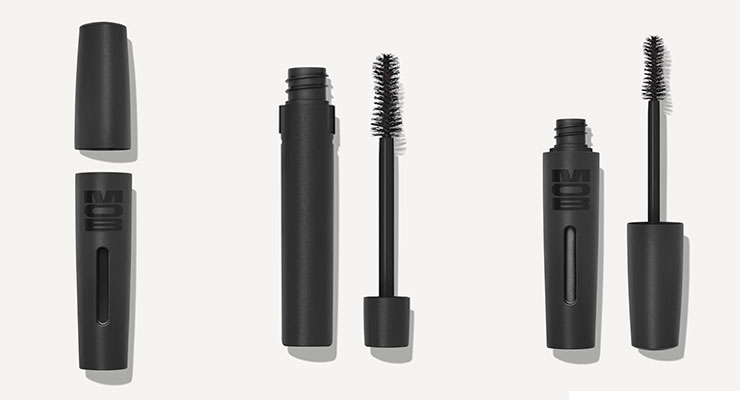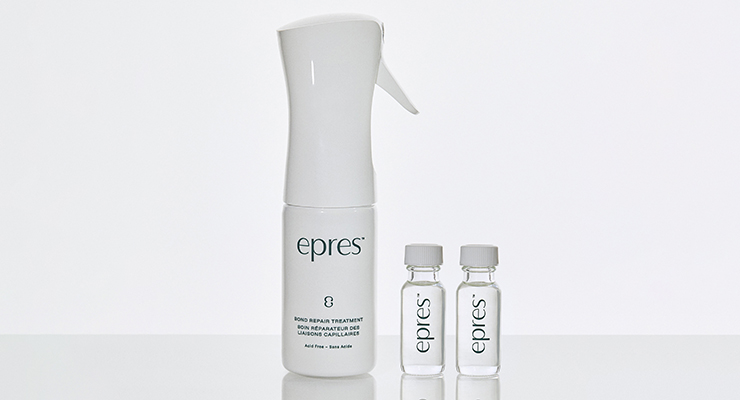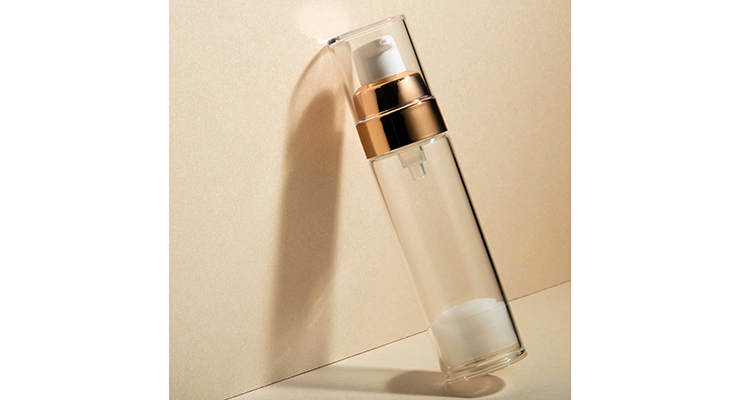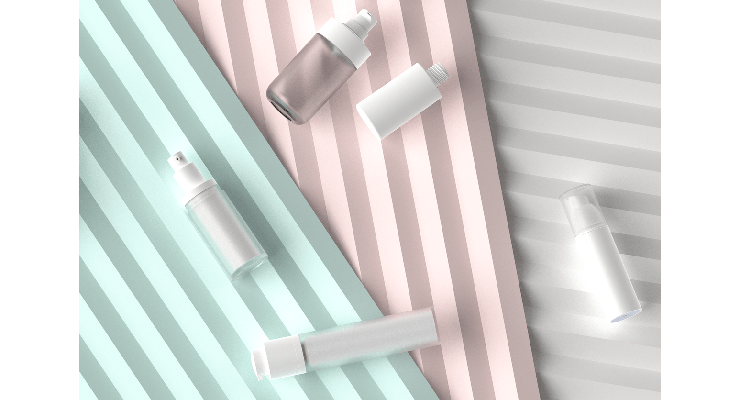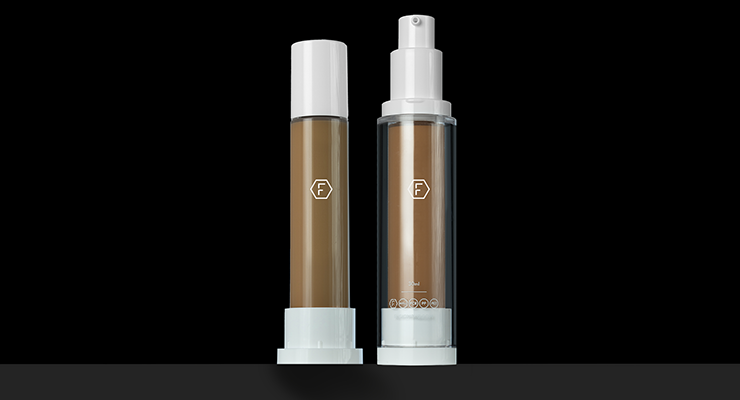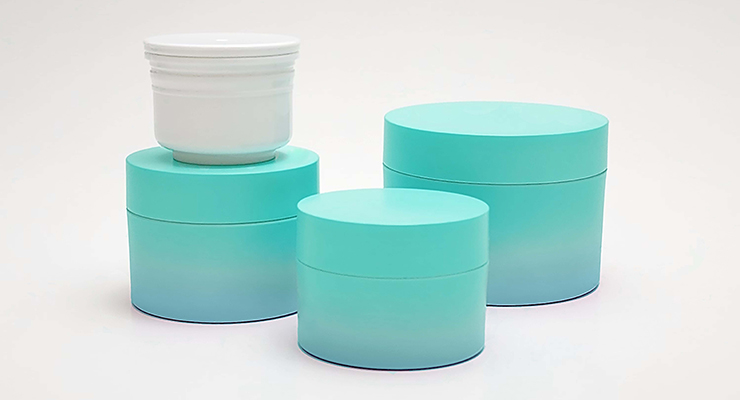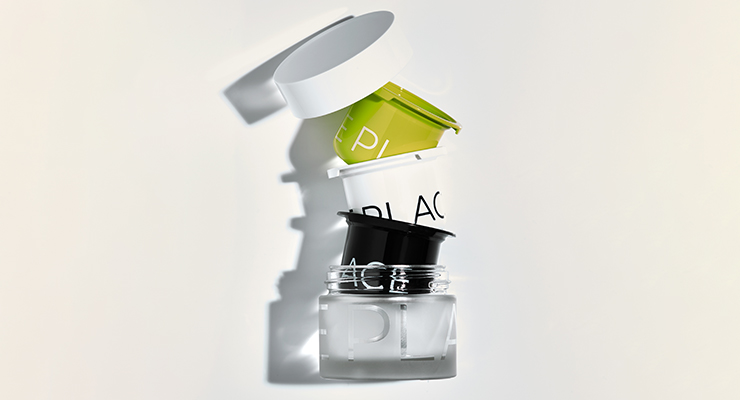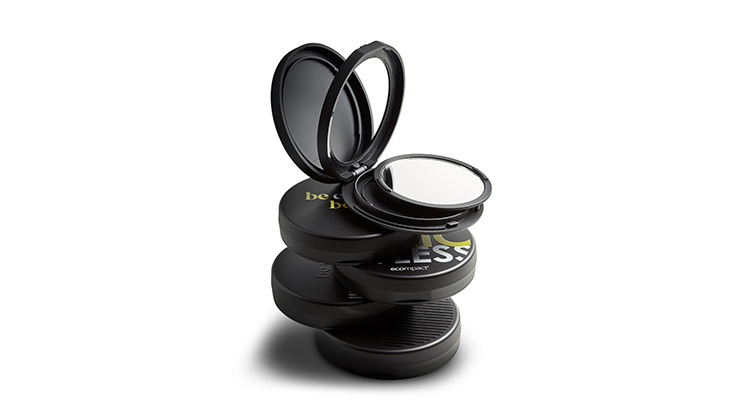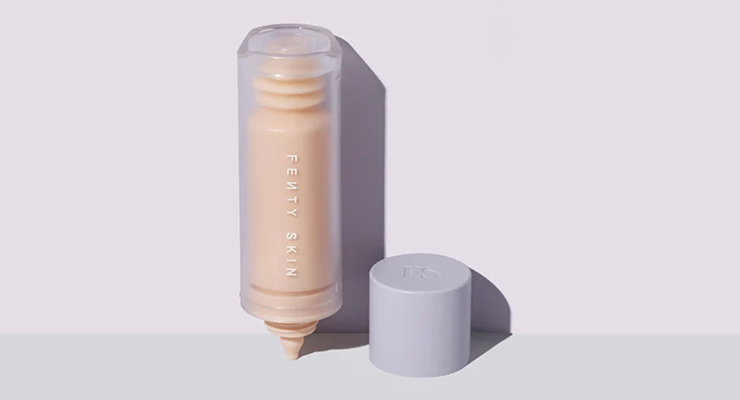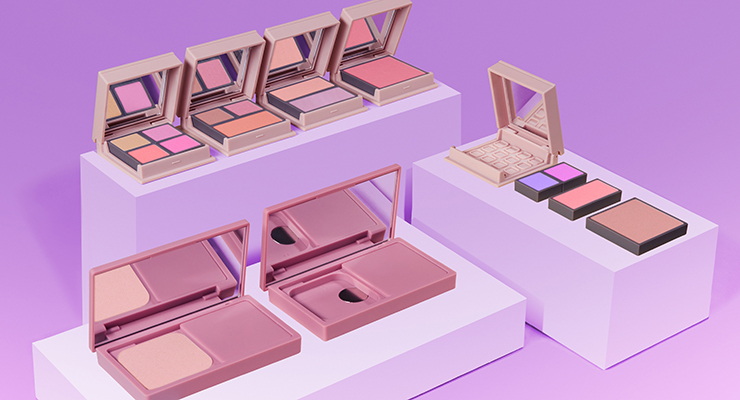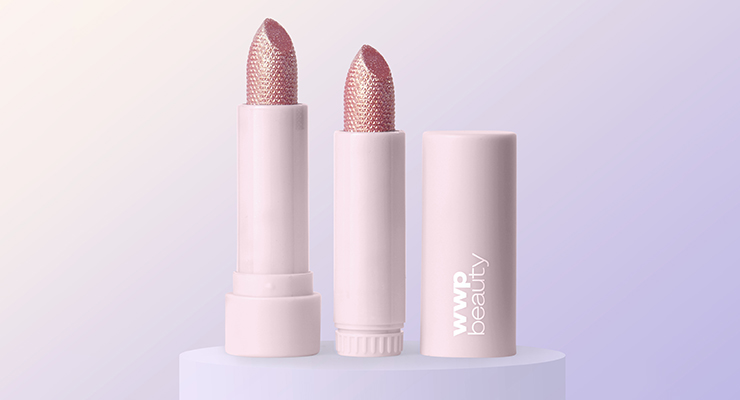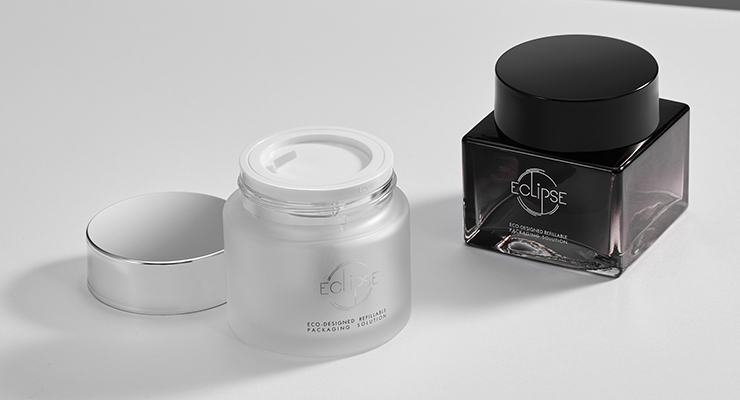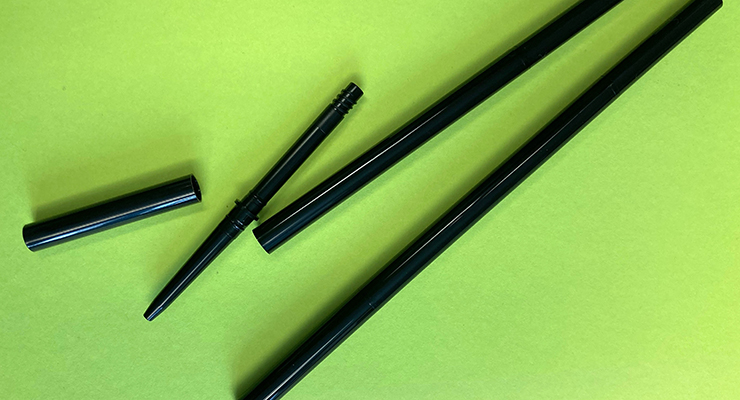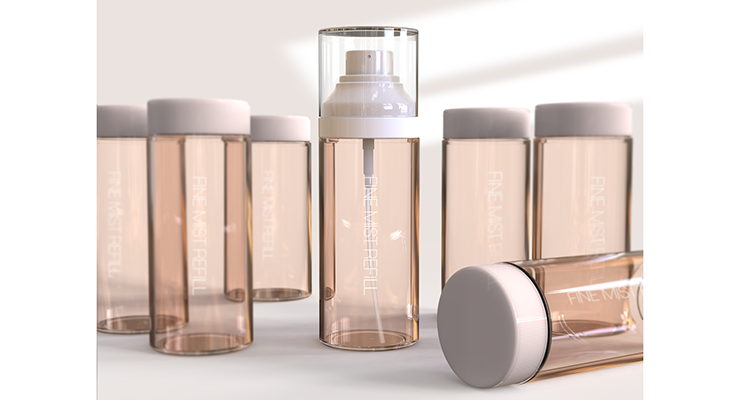Marie Redding, Senior Editor02.01.23
Refillable packaging options are soaring—and it may be the beauty industry’s most sustainable solution, to date. Refillable and reusable packaging sales were estimated at $42 billion in 2022 and are projected to grow 5% annually, rising to $53.5 billion by 2027—which is forecast to be 4.2% of all global packaging sales, according to Smithers.
Alisha Gallagher, co-founder and chief brand officer of MOB Beauty and founding member of Pact Collective, says, “Pact supports beauty’s shift to refillable packaging—and the use of durable containers that are made sustainably and designed to be refilled multiple times. When executed effectively, these minimize waste in the beauty industry and are the gold standard for the future of beauty packaging.”
Packaging suppliers agree. “Beauty refills are the future,” says Sheherazade Chamlou, vice president of sales, Beauty, Americas, SGD Pharma. “I believe refillable products will be a long-term trend,” she adds, noting that it will be up to beauty brands to better communicate the benefits to consumers.
Many beauty brands are already doing this, especially new indie brands. MOB Beauty’s packages are all refillable, including lipstick, mascara, eye shadow palettes, and more. “Single-use packaging is horrible for our planet,” says Gallagher. “The majority of beauty packaging is made for short-term use. We can do better,” she says.
Like MOB Beauty, other indie brands are making it a mission to make beauty more sustainable. BareLuxe, a new skincare brand, says it is an “anti-plastic activist brand.” Founder Heather Smith, an ICU physician in Canada, packaged serums and face oils in glass bottles with droppers. Refills are sold in plastic packets. “Our packets are fully recyclable because they are an unlined, foil-free, and mono-material,” she says.
Epres, a new haircare brand, sells ultra-concentrated waterless refills of its at-home hair treatment product in small vials. The user pours the Bond Repair product into the brand’s spray bottle, and shakes. “We feel we have a responsibility to create both innovative products and packaging—and refillable packaging is a good option at this moment,” says co-founder Eric Pressly.
Despite plastic’s non-eco-friendly reputation, plastic packaging will always have certain advantages. McKinsey & Company notes the “surge in sustainability pressure” in a recent report, but says despite this, the company states, “the combined power of plastics’ attractive attributes in terms of cost, automation, and quality will likely buoy rigid and flexible plastic substrates—if converters can increase recyclability and recycled content.”
McKinsey & Company also predicts, "expect tomorrow’s packaging to be smart, personalized, and reusable." And the firm stated, in October 2022, “Interest in reusable packaging has grown dramatically...” citing consumers’ rising concerns over sustainability as a reason, as well as regulatory pressure over single-use packaging.
Greenpeace is hoping to sway regulators and consumer opinion. The organization is asking companies to phase out all single-use plastics and move toward “reuse systems”—and set targets to have at least 50% reusable packaging by 2030.
“We are witnessing a significant regulatory push toward sustainability,” says Maurizio Ficcadenti, global R&D manager, Baralan. “Sustainability is gaining momentum as we move toward a circular economy. Consumers are more aware of their environmental impact, and their interest in refillable packaging continues to snowball,” he says.
Market demand is sparking innovation. Baralan recently introduced “DEA—Developing the Evolution of Airless.” “Designed without an internal container, it is the first airless system in which the filled product is directly in contact with its glass container,” says Ficcadenti. Baralan’s airless glass containers can act as cartridge components inside an outer case, for a refillable packaging system. “Our Premium outer case in PET, for example, can provide a luxury look and feel,” he explains. “Our DEA line also stands out in terms of minimized carbon footprint, given its light weight compared to typical glass bottles,” he adds.
Suppliers Meet Growing Demands
“It’s no surprise that we see the industry stepping up with new options,” says SGD Pharma’s Chamlou. “Consumers are ready to curb single-use plastic and reduce waste if brands offer accessible and sustainable alternatives. Refillable packaging is a practical and eco-conscious way for beauty and sustainability to co-exist,” she says.Ilja Zutt, managing director of Fasten Packaging, an Innovative Beauty Group company, says even mass brands are interested in refillable packaging. “In the past, only prestige considered the concept,” Zutt says. “We strive to create refillable packaging that is user-friendly, customizable, and produces minimal waste,” she says.
Fasten Packaging’s “Refill, Reuse, Repeat” mono-material jar is made from recycled PP, and contains an ultra-light thermoformed refill cup. It inserts with one click, and its color can be custom. “This jar is our award-winning design,” says Zutt. “The base features an open structure, allowing users to see which refill product is inside, while also reducing material use by up to 80% compared with a conventional 50ml jar,” she explains.
Fasten Packaging also offers its “Refill Airless,” a luxe refillable airless bottle that has an outer injected PET part that resembles acrylic. The supplier’s “Hold Me” PP pump and pouch frame can replace a standard bottle for a sustainable refill system.
Another supplier, Fusion Pkg, offers brands its “Repeat Refillable Airless,” paired with its new “Airless-One” polyolefin pump engine. It features a PP refill cartridge and a PET reusable outer bottle, and both are designed for easy recycling. Each refill includes a pump engine, which is integrated into the cartridge, allowing users to refill the product without exposing the formula to air, the supplier says.
“We are working to bring more refillable options to our custom order line,” says Eileen Wang, vice president of sales and marketing, Allstar Packaging Corp. The supplier offers custom refillable airless bottles, jars, and lipstick packaging. The company offers brands its new “252 Refillable Airless,” a refillable package that comes with a separate refillable inner bottle and cap. Allstar also offers its “590 Series Refillable Jar,” featuring a refillable insert that pops out from the bottom.
Fabio Manzoni, group marketing manager, Lumson, says, “Refill systems are becoming increasingly significant in the new circular design systems, and are an effective solution. Refillable packaging also encourages consumers to be more mindful of waste.”
Lumson’s customizable “Re Place” glass jars feature a removable PP inner cup. The collection includes two 50ml designs, “De Luxe” and “Unique,” and the new ”Japa Re Place” style, in 15- to 50ml sizes. “We can customize both the outer jar and refill cup using various effects and decorations, from screen-printing to sophisticated inner lacquering, which enhances the thickness of the glass,” says Manzoni. “Combine these jars with an aluminum overshell for a luxury approach—and for a total eco-concept, the ‘De Luxe’ glass jar is available in PCR glass,” he says.
Lumson also collaborated with Marino Belotti to develop the first makeup compact with components that separate easily for recycling. “Our Ecompact has an aluminum inner tray and a mirror that quickly separates from the main body of the compact,” says Manzoni. “The consumer can refill the compact and reuse the mirror,” he says. Traditionally, gluing or heat-sealing makes separating these parts difficult. The mono-material compact can be made using PCR ABS.
Gilda Mirra Cutri, vice president of operations & business development at Coverpla, also says there are rising requests for refillable packaging. “We keep expanding our stock offerings to incorporate more refillable packaging options. We are continuously designing new shapes, while keeping refillable options in mind,” she says. Coverpla offers refillable packaging for fragrance and skincare, including glass and plastic bottles, jars and stick packages.
The team at APC Packaging is responding to market demands, and launching a new glass refillable jar and a 100% PP refillable jar. Both will debut at Luxe Pack Los Angeles this year. “We also have an Airless Refillable System that is popular with global skincare brands,” says Erin Gallagher, director of marketing, APC. The system features a reusable outer bottle and actuator, paired with a refillable internal cartridge. It is PP, and can be made with PCR.
Denis Maurin, head of global innovation and sales support, HCT, says, “We feel that beauty consumers are much more open to using refillable packaging than ever before—they are recognizing overpackaged products and don’t like that beauty generates so much waste. Refillable packaging can significantly reduce the amount of single-use packaging being generated. It’s a great way for a brand to be more sustainable, while retaining their existing aesthetic and branding.”
Maurin says HCT is preparing for increasing demand by converting several of its most popular stock packages to refillable designs. “We’re also adding new refillable options across all categories—color cosmetics, skincare, hair care, body care and fragrance,” he says. “There is a huge opportunity for brands to think about package designs that can be refilled endlessly or reused in different ways. A beauty brand can tell a meaningful story with a package that’s intended to be reused—or cherished as a keepsake,” he says.
HCT offers its patented refillable Flex Dropper, ideal for any low-viscosity product, in three styles—and Fenty Skin’s new “Watch Ya Tone Niacinamide Dark Spot Serum” is in this mono-material package. “We partnered with Fenty to create an innovative refillable package based on our Flex Dropper design,” says Maurin. The flexible inner bottle folds like an accordion near the top. The user pushes down to compress it, dispensing the serum through the nozzle at the bottom.
“The accordion design reduces the use of single-use plastic because it requires less parts than a typical dropper,” Maurin explains. Users can recycle the empty PP refill, and slide in a new one—reusing the outer bottle and cap. Arrows printed on the packaging act as a guide to easily connect the parts.
HCT also offers several refillable lipstick and lip balm packages in PET and tin, which are mono-material for easy recycling “We also offer the industry’s first refillable mechanical mono-material PET pencil,” says Maurin.
WWP Beauty’s Gary Myer, vice president of engineering, says, “Beauty brands want to deliver a high-end aesthetic with packaging materials that function well, while also meeting sustainability goals. We ensure a brand’s refillable package maintains a high-end look and feel. Our recycle-ready, mono-material refill packaging is engineered to use the least amount of material, while remaining practical for filling and distribution.”
WWP’s “eco-smart” designs include its “Color Revolution” collection of refillable compacts. The ABS compacts have four replaceable PP pans, which are compatible with pressed powder or hot pour cosmetics. “The magnetic pans have a Tetris-like fit, allowing the user to assemble a palette in any desired configuration,” Myer says. “Our refillable packaging reduces material usage, lowers carbon emissions, promotes a more circular design system, and ultimately helps to create a more sustainable future,” he says.
WWP’s “Mono-Material Refillable Lipstick” is a luxurious weighted refillable lipstick in PET for easy recycling. It can also be made using up to 100% rPET. “It features an intuitive design that’s easy to refill,” says Myer. “We found a way to eliminate other materials typically in a lipstick package, such as HIPS, POM and aluminum—and this lipstick package reduces 24% of CO2 emissions after the consumer refills it once. Then, there’s a reduction of 70% of CO2 emissions on the 4th refill, when compared to a standard lipstick that includes metal,” he explains. WWP’s other recent innovations include its “Powered Up” refillable pump, a collection of “Touchless Refillable Cosmetic Pens,” and refillable stick packaging.
Another supplier, APR, says its innovation team is continually developing new refillable packaging solutions, especially for skincare products. Stay tuned for its new developments.
Packaging Suppliers Say There are Challenges for Beauty Brands
Choosing a refillable package is not without challenges for beauty brands. “Consumers need a clear explanation of how a refillable package works. Direct-to-consumer brands can do this more easily on their website,” says HCT’s Maurin. “Another issue is convincing retailers to handle refills,” he explains.SGD Pharma’s Chamlou says, “The main challenge that beauty brands face when launching a refillable package is to ensure that refilling it is effortless.” SGD Pharma Beauty & Care is launching a new refillable glass jar, “Eclipse.” The stylish 50ml jar has an inner PP pod refill that can be produced in PCR. “It locks into the jar with our patented assembly system,” says Chamlou. “Eclipse has been developed as a full packaging stock offering, which reduces the total cost of ownership and allows for a faster time-to-market,” she adds. “Eclipse” is a part of the supplier’s “Constellations” stock glass packaging range.
Ray Lewis, president of Nate Packaging, also says that getting consumers on board with refilling beauty products requires a user-friendly design. “It must be simple and intuitive, with inserts that can be quickly removed,” says Lewis. “If refilling a product is difficult, the consumer is not going to have the time or patience for it,” he says.
Lewis also feels that even in the beauty business, consumers are accepting of aesthetic “flaws” on packaging. “Refillable packaging doesn’t need to always look exciting,” he says. “If PCR turns the package gray or off-white, beauty consumers no longer mind. It’s more important today for a brand to be aligned with a consumer’s views on sustainability,” he explains. “But this wasn’t true in the past, when brands were all trying to out-design each other on the shelf,” he says.
Lewis says the team at Nate Packaging are experts in helping brands design refillable packaging at the lowest possible cost, so brands can pass those savings on to consumers—as an incentive to choose a refill over purchasing a new product. Nate Packaging offers several refillable packaging options, including airless PP bottles, jars, deodorant sticks, lipsticks, and more. Nate Packaging’s 100% PP eyeliner pencil is fully recyclable, and features an insert as a replacement tip. Plus, it’s customizable.
Claude Desmarais, director of business development, NA, at Packtory, wonders, “Why aren’t more beauty brands offering upscale refillable packages that can be reused indefinitely?” He says Packtory is committed to developing refillable solutions to help the beauty industry become more sustainable.
“Although a lot of beauty brands seem interested, many have not taken the step toward refillable packaging yet,” says Desmarais. Packtory offers refillable jars in many sizes, made with 100% recyclable PP, which are also available with PCR. “We also have a version in recyclable bio-plastic, which is 51% paper pulp polymer and 49% PP,” says Desmarais. Packtory also offers metal-free refillable fine-mist sprayers and airless pumps.
Jing Santos, co-founder, Accipiter Beauty Packaging, agrees there is much more interest in refillable concepts from beauty brands—but, when asked if the supplier has been fulfilling lots of orders for refillable packaging Santos says, “Unfortunately, not as many as we could be.”
Santos says the company is ready to help beauty brands adopt refillable concepts, but many brands are pausing. “New brands have an easier path to market when choosing refillable packaging from the start. It seems to be more difficult for an established brand to make the switch—they are sometimes worried about cannibalizing revenue,” Santos explains. “Brands are looking for ways to reduce their plastic consumption and overall carbon footprint—so hopefully, more will realize that refillable packaging is an ideal way to accomplish both.”
Looking Ahead
Experts say we can expect greater adoption of refillable packaging, from both beauty brands and consumers. SGD Pharma’s Chamlou says, “During the pandemic, people became more aware of taking care of each other and our planet—and this awareness will continue to grow. Consumers began looking for more sustainable options—and no more sustainable packaging concept is hotter right now than refillable packaging.”Lumson’s Manzoni predicts, “Redesigning and rethinking new refill packaging systems without compromising aesthetic or product protection functions will become more of a priority for the beauty industry, as our unwavering commitment to sustainability grows.”

